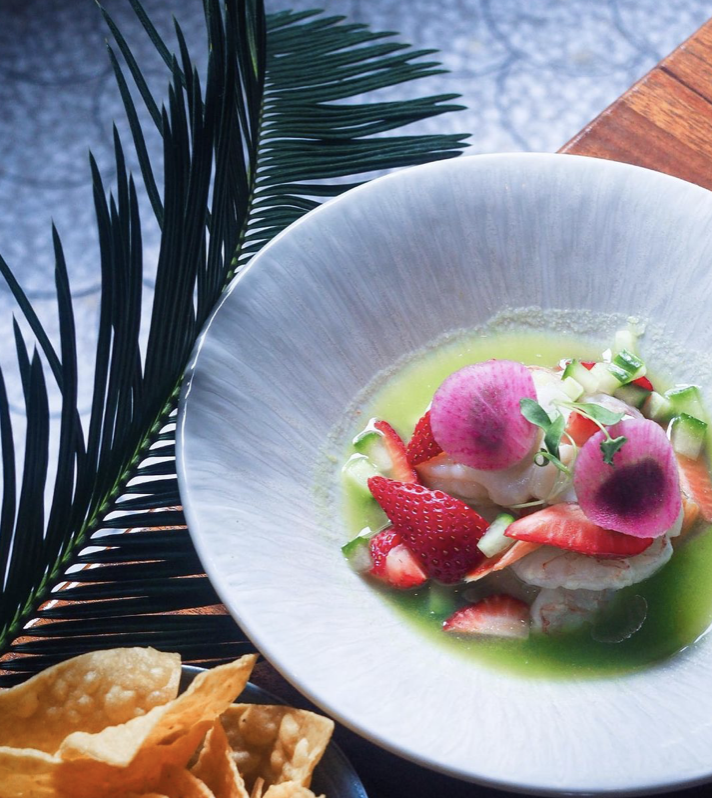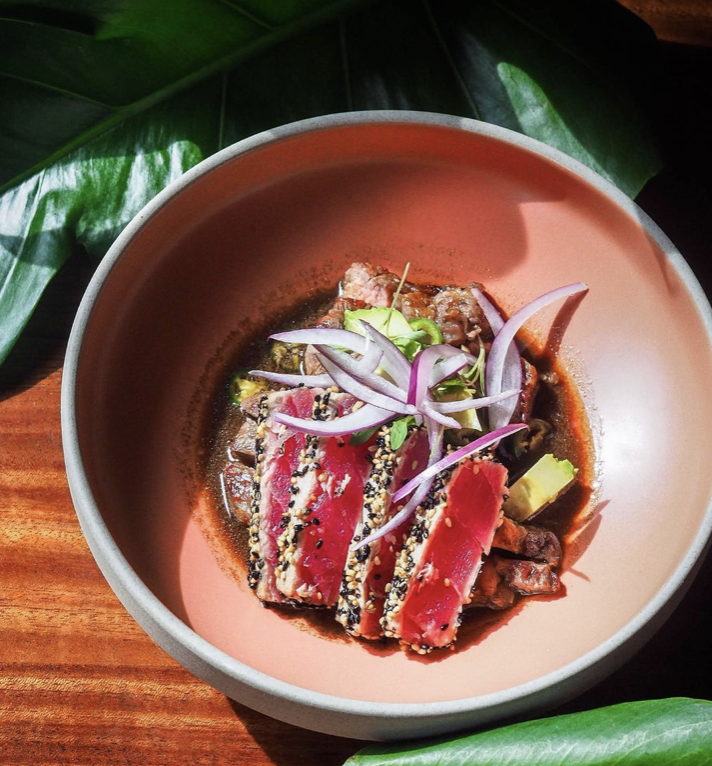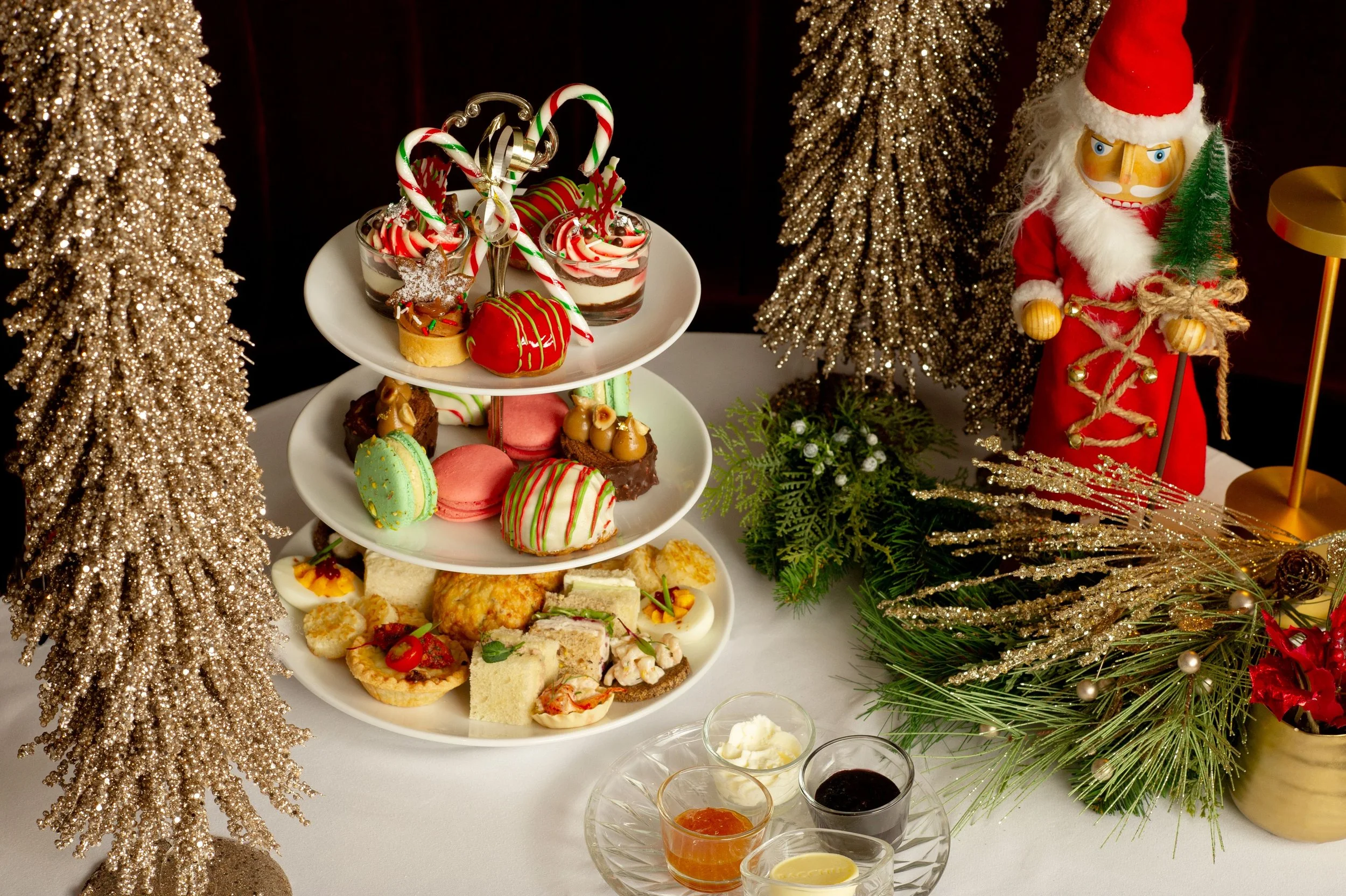Vancouver chef Francisco Higareda shares his Mexican culture through food at Monarca
From raspberry mole to "corn smut", the Gastown restaurant’s menu is playful and contemporary
Monarca.
Francisco Higareda.
WHEN CHEF FRANCISCO HIGAREDA opened Ophelia Cocina Mexicana in Olympic Village in 2020, he was starting from scratch—at least when it came to making the base for the restaurant’s mole, the complex sauce that is the national dish of Mexico. Just as in the country of his birth, the rich, dense paste that starts with roasted and ground chilies, nuts, and seeds at Ophelia is like a living organism, constantly evolving over time, with ingredients continuously being added to it, “old” mole used to make new mole.
The Veracruz native brought that same base with him to Monarca, his recently opened Mexican restaurant in Gastown. A signature item on the menu is filete en mole de frambuesa: triple-A beef tenderloin with truffle corn esquites and raspberry mole. At last count, that deep, dark mole with bright B.C. raspberries consisted of some 89 ingredients.
Higareda was inspired to create the berry version by mole makers in Puebla, where the substance comes in numerous varieties aside from well-known ones like poblano (a red mole with an abundance of dried chilies), negro (dark, bitter, and sweet with chocolate), or verde, a green paste made of from ingredients like cilantro, pumpkin seeds, jalapeños).
“In the State of Puebla, there are so many flavours: almond, apple, berries, strawberries…” Higardea tells Stir on the line from Monarca. “I wanted to try to do something similar to a classic red mole, and B.C. has some of the best berries in the world. The raspberries’ acidity and flavour are there, even though I have so many ingredients—a lot of chilies and chocolate… I mix a big, new batch with the old batch and put in stuff like mangos—fresh or dehydrated—or strawberries or fresh apples or fresh pears or almonds or currants, pistachios, macadamia nuts, butter, sesame seeds… You’re not going to necessarily taste everything, but it all makes it richer. It keeps growing, like sourdough.”
Raspberry mole is one example of how Higareda is playing with ingredients and with his fine-dining background at Monarca. Ophelia—which recently earned a coveted Recommended recognition from MICHELIN in its inaugural Vancouver Guide—is anchored in traditional Mexican food, while he sees Monarca as a place where he can experiment.
“I’m doing contemporary Mexican cuisine with my own personal twists,” he says. “There is more freedom for me at Monarca. My training is in fine dining, but I don’t think you have to have a fine-dining restaurant to have all these techniques on the plate. I’m trying to make it more approachable for people.”
Consider Monarca’s aguachile verde con fresas: Higareda pops up cured prawns and scallops with juicy strawberries alongside avocado and red onion in a jalapeno lime broth. Char-grilled salsa roja-marinated octopus (pulpo a la brasas) is adorned with blue-cheese crumbs; a chili aioli dresses new potatoes and Brussels sprouts. For the broth in aguachile de ribeye y atun (grilled ribeye with ahi tuna crudo), the chef incorporates soy sauce, an influence in Mexican cuisine that stems from the Nao de China, meaning “China Ship”, a name for vessels that sailed between China and Mexico centuries ago, bringing silk and spices.
Then there’s that aforementioned filet with raspberry mole. It also incorporates an ingredient rarely found on local menus that’s integral to Mexican culture: huitlacoche. The fungus is also known as Mexican truffle or, less desirably, “corn smut”. Dating back to the Aztecs, it’s a plant contagion that feeds off of corn before its ears fully develop. Resembling dark blue-grey bulbs, the culinary delicacy adds smokiness and subtle sweetness to dishes and has a soft, chewy texture.
“There’s a story in Mexico coming from the Aztecs that the gods gave this product to them,” Higareda says of corn. “They told them ‘it's going to the base of your nutrition.’ The interesting thing with corn is that without humans, it cannot live. If we disappear from this world, corn will disappear too. Corn is so interesting for us in Mexico.”
There’s a story behind everything on the menu at Monarca, from Carlota de limon—the semi-frozen pielike lime dessert that Higareda makes with vanilla Maria cookies he grew up with—to the extensive list of premium tequila, mezcal, and other agave, served neat or in cocktails. While Higareda named Ophelia after his Spanish-born mother (whom he first learned to make mole from, incorporating coffee beans that the family roasted), Monarca is a nod to his father, whose home town is just outside of Mexico’s UNESCO Monarch Butterfly Biosphere Reserve. The beautiful creatures overwinter there, and are also said to represent the souls of ancestors returning to visiting their families for Día de Muertos.
The restaurant is a way for the chef to share his culture.
“I’m very proud to be Mexican,” Higareda says. “The food there is so big. It’s completely different between regions. What we’re showcasing in Vancouver is quite limited. What I like is when people come into the restaurant and try something they haven’t tried before, and they make that face, that affirmation that says, ‘This is good.’ That’s why I do what I do.”
Monarca.


















